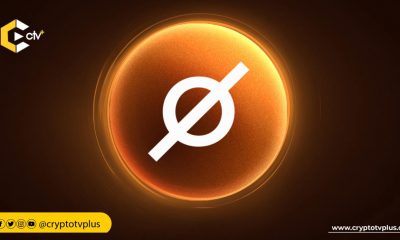Education
Ethereum’s Shapella Upgrade: What It Means for ETH Holders

Ethereum, which has grown into an ecosystem of ecosystems, is currently the dominant DeFi infrastructure chain in the crypto Industry. Last September, the Ethereum blockchain completed its transition from a proof-of-work to a proof-of-stake system. However, the inability to withdraw staked Ether remained a key loose end until the Shapella upgrade.
What is Shapella Upgrade?
The Shapella upgrade refers to two concurrent upgrades, Shanghai and Capella, which will go live on April 12. The Shapella name is derived from “Shanghai” (the host city of the Devcon 2 conference), and “Capella” (the brightest star in the northern constellation of Auriga).
The upgrade will affect both the consensus layer (referred to as the “Capella” part) and the execution layer (known as the “Shanghai” part). According to the Ethereum Foundation, the primary feature of Shapella is the activation of the opportunity to “unstake” Ethers from deposit contracts, which allows stakers to withdraw their ETH.
In addition, Shapella includes some minor changes to Ethereum’s codebase related to withdrawal processes. As an ETH holder or staker, there is no need to take any action regarding the upgrade, except for the operators of nodes and stakers, who should upgrade their software builds to the following versions:
For Consensus layer releases:
- Lighthouse v4.0.1
- Lodestar v1.7.0
- Nimbus v23.3.2
- Prysm v4.0.0
- Teku v23.3.1;
For Execution layev2.42.0r releases:
- Besu v23.1.2
- Erigon v2.42.0
- Go Ethereum (Geth) v1.11.5
- Nethermind v1.17.3
If an operator misses an update, their nodes would synchronize with a deprecated version of the Ethereum (ETH) blockchain and would not be able to work with the post-Shapella network.
Shanghai consists of four Ethereum Improvement Proposals (EIPs).
- EIP-3651 Warm COINBASE
- EIP-3855 PUSH0 instruction
- EIP-3860 Limit and meter initcode
- EIP-4895 Beacon Chain withdrawals
The first EIP is EIP-3651, which proposes a reduction of gas costs for COINBASE payments. COINBASE, in this context, refers to rewards distributed for adding new Ethereum blocks. The purpose of the proposal is to reduce the cost of these rewards by making the gas fees associated with them lower. This COINBASE is not to be mistaken with Coinbase (the crypto exchange).
The second EIP is EIP-3855, which aims to optimize smart contracts by making them more secure and compact. It proposes a new PUSH0 instruction, which would help to streamline the contract’s code and make it easier to read and understand. This would also make the contract less susceptible to security issues.
The third EIP mentioned is EIP-3860, which addresses a potential denial-of-service (DoS) attack vector by limiting the size of the initcode. The initcode is the executed code when a new smart contract is created, and limiting its size would prevent attackers from using it to launch an attack.
The fourth EIP, EIP-4895, relates to Beacon Chain withdrawals, which allows validators to withdraw ETH from Beacon Chain to EVM. This proposal is significant because it enables validators to withdraw their locked-up ETH and use it on the Ethereum network.
The Capella upgrade, which is part of the Shapella upgrade, is related to EIP-4895. It aims to make ETH that is locked on Ethereum’s Execution Layer (EL) withdrawable by unlocking it from Ethereum’s Consensus Layer (CL). This would allow ETH to be credited to an Ethereum address on its EL once Capella is finalized. This will free up more than $32 billion worth of ETH that is staked and locked into Ethereum’s Beacon Chain, accounting for around 15% of the circulating supply.
How will the withdrawals happen?
There are two methods available to access staked ETH withdrawals:
- partial withdrawals and
- full withdrawals.
Partial withdrawals allow you to withdraw excess profits after 32 ETH or earn rewards, which can be immediately withdrawn while your validators continue to add blocks to the Beacon Chain. However, if you are running your validator, you must migrate it to include a 0x01 withdrawal credential to enable automatic partial withdrawals. Otherwise, these withdrawals won’t happen by themselves. But, even if you have successfully installed the withdrawal credential, the speed of getting rewards will depend on the number of withdrawal requests processed. Only 16 partial withdrawals can be requested in a single slot, which occurs every 12 seconds. Depending on the number of requests, the queue may take a long time to process once Shanghai goes live.
On the other hand, full withdrawals allow you to remove the entire balance, including the 32 ETH from the blockchain. However, your validator will stop participating in the block validation process, and full withdrawals will not occur automatically. To initiate full withdrawals, the validator must send a message to the blockchain to add itself to the exit queue, which takes time and will be released gradually.
A total of 57,600 partial withdrawals per day will be allowed, out of the current ~16 million staked, which will allow validators to withdraw accumulated staking rewards. This should naturally reduce selling pressure. The more validators who choose to opt for full withdrawals, the longer the withdrawal period will take, which will further reduce selling pressure. Stakers may choose to hold on to their ETH, especially those with long-term investment strategies, or use their staking rewards to create new validators, more ETH and weather through the current market climate, as opposed to selling them for a profit.
Partial withdrawals will saturate the early days of post-Shanghai Ethereum, taking up most of the five initial days of withdrawals. Major players like Kraken, Lido, and Coinbase will accommodate immediate requests through partial withdrawals.
Approximately 110,000 validators can withdraw their staked ETH per day, given there are around 7,200 slots per day. Since there are around half a million validators, partial withdrawals will take approximately five days, with over $350 million worth of withdrawals processed daily
Some researchers anticipate short-term price volatility due to more ETH withdrawals from the market, but they expect it to stabilise eventually. This is mostly because most depositors (~75%) are currently underwater on their staked ETH and will not realise significant gains. Thus, the 1.1 million Ether that has been awarded to validators on the Ethereum network, could potentially increase the selling pressure in the coming weeks as these validators seek to recoup losses.
Also, Celsius; the company that got bankrupt in mid-July 2022 could sell its staked Ether balance of 158,176 ETH to repay creditors, resulting in additional selling pressure. But since most depositors are currently in a loss-making position, the gains from these sales may not be significant.
On a more positive note, Lido and Rocket Pool stakers already have liquidity for their staked positions and are unlikely to use Shapella as a liquidity event.
The projected sell pressure after the upgrade is estimated to be around 1-2% of the total supply of ETH, and withdrawal and exit queues are expected to create a backlog of 14+ days. The staking participation rate is expected to rise to a steady state of around 50%, and the staking yield may decrease from the current ~5.5% to between 2.5% – 3.5%.
Conclusion:
Shapella will be the first significant milestone for Ethereum after the Merge. As of now, Beacon Chain holds over 563,000 validators and has accumulated a massive 18 million ETH stake worth around $33.5 billion. Ethereum’s dominance in the DeFi space has spawned an entire liquid staking industry, with platforms like Lido Finance and Coinbase Wrapped Staked ETH. These liquid staking tokens are equal in value to ETH and can be used across lending dApps as collateral for loans.
With Ether being one of the biggest networks utilizing the PoS consensus mechanism, the Shapella upgrade is expected to positively influence the adoption of staking in the crypto world, provide a robust framework to support Ethereum’s network and improve its scalability. It is definitely a step in the right direction for the Ethereum community.

























1 Comment